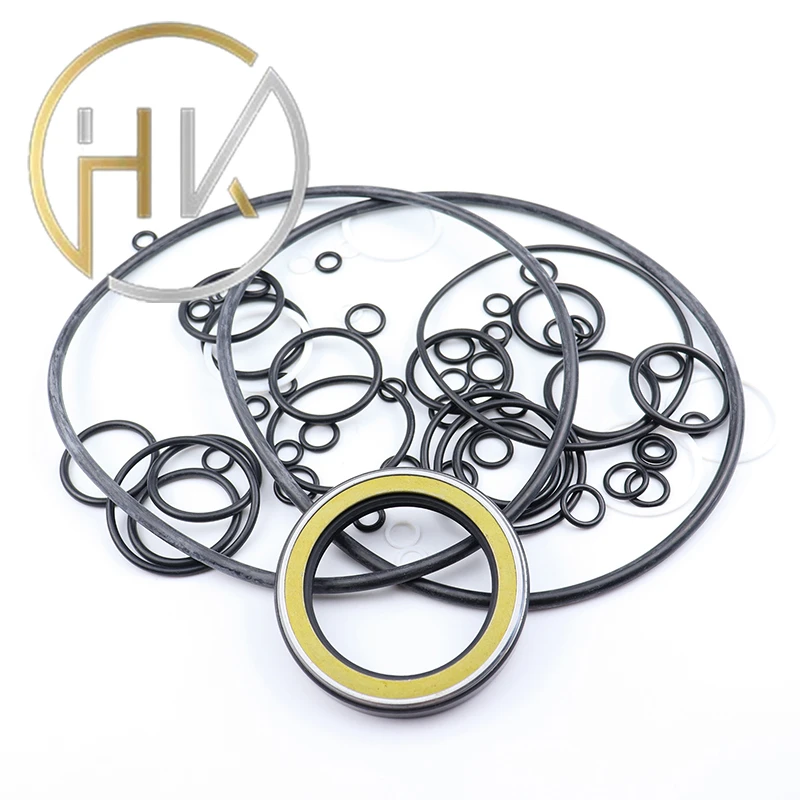Nov . 18, 2024 06:55 Back to list
Shaft Sealing Solutions for Enhanced Performance and Durability in Mechanical Systems
Understanding Shaft Wiper Seals Function, Design, and Applications
Shaft wiper seals play a crucial role in various mechanical systems by preventing contaminants from entering the internal components, while allowing the smooth operation of moving parts. These seals are particularly important in hydraulic and pneumatic applications, where they help maintain system integrity and performance. This article will delve into the function, design considerations, and applications of shaft wiper seals.
What Are Shaft Wiper Seals?
Shaft wiper seals are specially designed seals placed at the opening of a housing or bearing where a shaft exits. Their primary function is to 'wipe' away dirt, debris, and moisture that may accumulate on the shaft surface as it moves. By doing so, they protect sensitive internal components such as bearings, gears, and hydraulic cylinders from potential damage caused by contaminants.
These seals are often constructed from durable materials like rubber, polyurethane, or thermoplastic elastomers, which provide resilience against wear and tear. The design of a wiper seal typically features a lip that makes contact with the shaft, creating a barrier to keep unwanted particles out while facilitating the smooth operation of the shaft.
The Importance of Shaft Wiper Seals
In many industrial applications, the presence of contaminants can lead to catastrophic failures. Even small amounts of dirt can compromise the integrity of lubricants, leading to increased friction, wear, and ultimately, equipment malfunction. Therefore, implementing high-quality shaft wiper seals is essential for several reasons
1. Protection Against Contamination Wiper seals help ensure that internal components remain clean and free of harmful particles, prolonging the life of machinery.
2. Enhanced Equipment Reliability By minimizing the risk of contamination, these seals contribute to the consistent performance of mechanical systems, reducing the likelihood of unexpected breakdowns.
3. Cost Savings Investing in effective wiper seals can decrease maintenance costs and extend the lifespan of equipment, resulting in significant savings over time.
4. Improved Operational Efficiency Clean machinery operates more efficiently, leading to better overall productivity in industrial settings.
Design Considerations for Shaft Wiper Seals
When selecting or designing shaft wiper seals, several factors need to be considered
shaft wiper seal

1. Shaft Size The diameter of the shaft is critical in determining the appropriate size and fit of the wiper seal, ensuring that it can effectively wipe the shaft surface.
2. Material Compatibility The seal material should be compatible with the operating conditions, including temperature, pressure, and the type of contaminants present.
3. Operating Environment The application environment—whether it be wet, dry, or corrosive—will affect the choice of materials and seal design.
4. Seal Design Different designs, including single-lip and double-lip configurations, can be employed based on the specific requirements of the application. Multi-lip designs may be utilized for enhanced sealing performance.
5. Installation and Maintenance Proper installation is critical to ensure the effectiveness of the seal. Regular maintenance checks can help identify wear and potential failure before they occur.
Applications of Shaft Wiper Seals
Shaft wiper seals are widely used across various industries, including
- Automotive In vehicles, these seals are vital for protecting power steering systems, hydraulic brakes, and suspension components.
- Industrial Machinery Equipment such as hydraulic cylinders, conveyors, and robotics often utilize wiper seals to ensure smooth operation amidst harsh working conditions.
- Aerospace Wiper seals are applied in aircraft systems, where cleanliness and mechanical reliability are paramount due to stringent safety regulations.
- Marine Applications In maritime environments, where exposure to saltwater and debris is common, wiper seals provide essential protection for drive shafts and rudder systems.
Conclusion
Shaft wiper seals are indispensable components that protect machinery from contaminants, enhancing performance and longevity across various applications. Understanding their function, design considerations, and significance in different industries underscores the importance of selecting the right wiper seals. Ensuring their proper installation and maintenance is vital for achieving optimal operational efficiency and safeguarding valuable equipment. By investing in quality shaft wiper seals, businesses can ensure reliability and reduce costs, paving the way for successful industrial operations.
-
TCN Oil Seal Metal Ring Reinforcement for Heavy Machinery
NewsJul.25,2025
-
Rotary Lip Seal Spring-Loaded Design for High-Speed Applications
NewsJul.25,2025
-
Hydraulic Cylinder Seals Polyurethane Material for High-Impact Jobs
NewsJul.25,2025
-
High Pressure Oil Seal Polyurethane Coating Wear Resistance
NewsJul.25,2025
-
Dust Proof Seal Double Lip Design for Construction Equipment
NewsJul.25,2025
-
Hub Seal Polyurethane Wear Resistance in Agricultural Vehicles
NewsJul.25,2025
-
The Trans-formative Journey of Wheel Hub Oil Seals
NewsJun.06,2025
Products categories
















